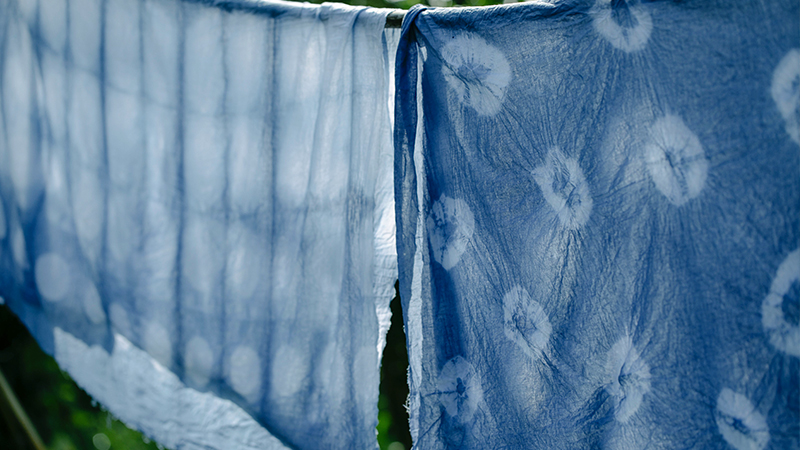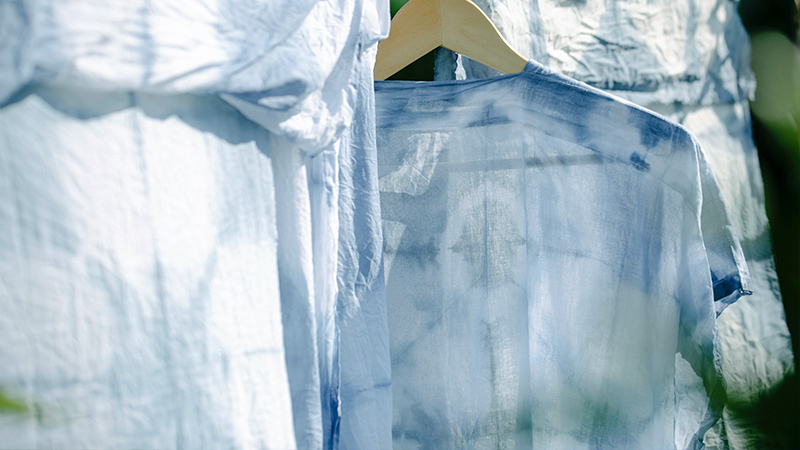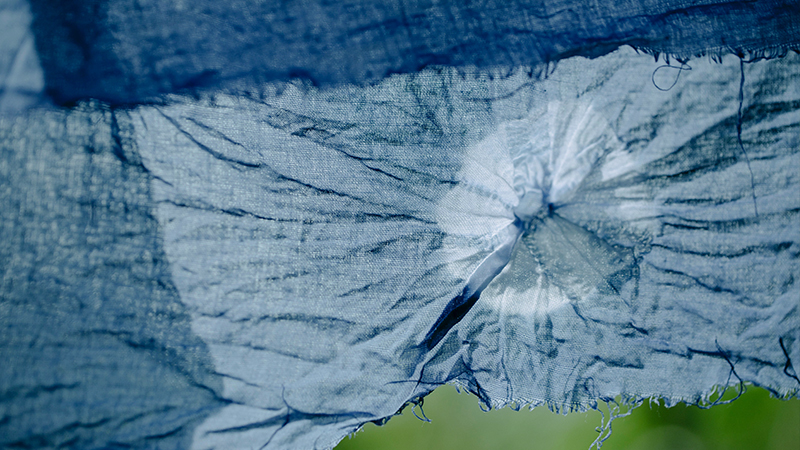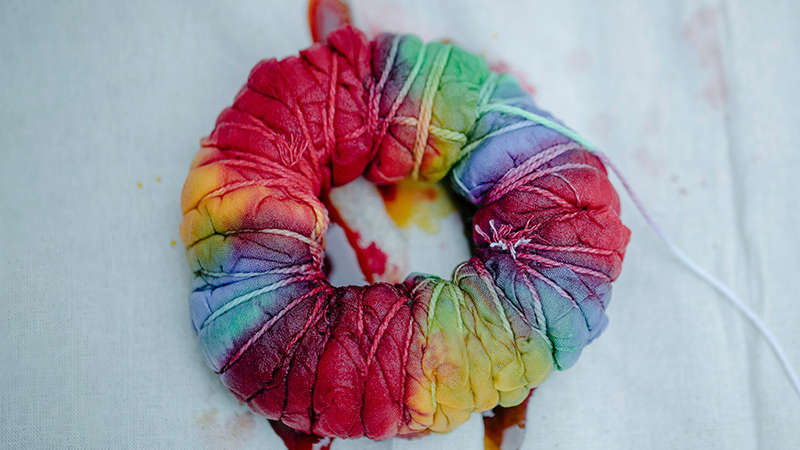Tie-dyeing is a vibrant and creative craft, but ensuring those vivid colors stay put can be a concern. Properly setting tie-dye is the key to preserving its brilliance over time.
This guide outlines a step-by-step process to lock in those colors and prevent premature fading. From allowing the dye to permeate the fabric to employing fixatives for added security, each step plays a crucial role.
Learn how to rinse, pre-wash, and employ optional techniques like using fabric dye fixatives.
By following these instructions, you’ll guarantee that your tie-dye creations remain as vivid and lively as the day you made them, lasting through numerous washes and wears.

What Is Tie Dye?
Tie-dye is a vibrant and artistic textile dyeing technique that involves folding, twisting, or binding fabric to create unique, multicolored patterns.
The process typically begins by securing sections of fabric with rubber bands or strings, creating distinctive, tight patterns. Once prepared, the fabric is immersed in a dye solution.
The bound areas resist the dye, resulting in vivid, contrasting designs. Tie-dye gained prominence in the 1960s as a symbol of counterculture and individual expression, often associated with the hippie movement.
Today, it remains a popular form of DIY fashion and art, offering a wide range of colors and patterns, making each tie-dyed piece a one-of-a-kind creation.
How to Set Tie Dye So It Won’t Fade?
Tie-dyeing is a fun and creative way to add vibrant and colorful patterns to your clothing and fabrics.
However, one common concern with tie-dye is how to set the colors so they won’t fade quickly. Properly setting tie-dye is essential to ensure that your colorful designs stay bright and vivid for a long time.
Here’s a step-by-step guide on how to set tie-dye to prevent fading:
Materials you’ll need:
- Tie-dyed fabric or clothing
- Plastic wrap or ziplock bags
- Rubber bands
- White vinegar or soda ash (sodium carbonate)
- Plastic squeeze bottles
- Fabric dye fixative (optional)
- A large plastic bucket or container
- Gloves
- Plastic tablecloth or garbage bags (to protect your work surface)
Steps to set tie-dye:
Allow the Dye to Set
Once you’ve applied the dye to your fabric and created your tie-dye design, it’s crucial to let it sit undisturbed. This process allows the dye to permeate the fibers, creating a strong bond with the fabric.
The setting time typically ranges from 6 to 24 hours, depending on the specific dye brand and instructions. If possible, leave it to set for the maximum recommended time for the most vibrant and long-lasting colors.
Rinse Out Excess Dye
After the designated setting time has passed, it’s time to rinse out the excess dye. Hold the tie-dye project under cold running water. Initially, you’ll notice vivid colors streaming out.
Continue rinsing until the water runs clear. This step is crucial in preventing color bleeding and ensuring that the final result is sharp and well-defined.
Remove the Rubber Bands
Gently remove the rubber bands or other materials used to create the tie-dye pattern. Take care not to pull or stretch the fabric, especially if it’s still damp, to preserve the integrity of your design.
Pre-wash With White Vinegar
This step is essential for setting the dye and enhancing colorfastness. If using white vinegar, fill a large bucket with water and add one cup of white vinegar.
For soda ash, mix 1 cup of soda ash with a gallon of water. Immerse your tie-dye item in the solution for about 15-20 minutes.
This helps open up the fibers, allowing the dye to bond more effectively. Afterward, thoroughly rinse the item to remove any residual vinegar or soda ash.
Rinse Again
Rinse the tie-dye item under cold water once more to ensure that all excess dye, vinegar, or soda ash is completely removed. A thorough rinse is crucial in preventing any potential irritation from residual chemicals.
Use a Fabric Dye Fixative
For an extra layer of protection against fading, consider using a fabric dye fixative. Follow the instructions provided on the fixative’s packaging carefully.
This optional step can be particularly beneficial for highly vibrant or intricate tie-dye designs.
Final Rinse
Give your tie-dye project a final, thorough rinse under cold water. This step ensures that all excess dye, vinegar, soda ash, and fixative (if used) are completely removed. Proper rinsing is essential for both the look and feel of your finished tie-dye piece.
Dry Your Tie-Dye Project

Once thoroughly rinsed, hang your tie-dye item in a shaded area to air dry. Avoid exposing it to direct sunlight, as prolonged sunlight exposure can lead to fading over time. Ensure that the item is completely dry before wearing or storing it.
Why Does Tie Dye Fade?

Tie-dye is a vivid and creative fabric dyeing technique, celebrated for its vibrant and intricate patterns. However, over time, even the most brilliantly dyed fabrics can experience fading.
This occurs due to a combination of factors, including the nature of the dyeing process and the properties of the dyes themselves.
Reasons for Tie-Dye Fading:
Dye Penetration
Tie-dye involves applying dyes to fabric in a liquid form. While the dyes bond with the fabric, they may not penetrate deeply, leaving some surface area less saturated.
As a result, over time, the outermost layers of the fabric may lose their intensity through repeated washes and exposure to light.
Washing Frequency and Technique
Frequent washing, particularly in harsh detergents and hot water, can accelerate fading. Aggressive washing methods can also contribute to color loss.
Additionally, tie-dye items washed alongside abrasive fabrics or in overloaded machines may experience increased friction, causing colors to fade faster.
Exposure to Sunlight
Prolonged exposure to sunlight is a primary culprit for tie-dye fading. The ultraviolet rays in sunlight break down the chemical bonds in dyes, leading to a gradual loss of color intensity. This effect is more pronounced in fabrics with less lightfast dyes.
Dye Quality
The quality and type of dye used can impact how well it adheres to the fabric. Lower-quality dyes may not bind as effectively, leading to faster fading.
Additionally, certain dyes are more prone to fading than others, depending on their chemical composition.
Lack of Proper Setting Techniques
Inadequate setting of the dye during the initial dyeing process can result in weaker color bonds. Without proper setting, tie-dye is more susceptible to fading during subsequent washes.
Harsh Chemicals
Exposure to harsh chemicals like bleach or strong cleaning agents can strip the color from tie-dye fabric, causing it to fade prematurely.
Tips for Preventing Your Tie-Dyed Fabric From Fading Over Time

Preventing tie-dye from fading over time involves a combination of proper setting techniques and care during wash and wear.
Here are some valuable tips to help maintain the vibrancy of your tie-dyed fabric:
Thoroughly Rinse After Dyeing
After the initial dyeing process, it’s important to be patient and thorough during rinsing. Take the time to ensure that all excess dye is removed from the fabric.
This step is crucial in preventing color bleeding and ensuring the final result is sharp and well-defined.
Use Fixatives
Consider using a fabric dye fixative after the rinsing process. Fixatives are specially designed to enhance colorfastness.
They create an extra layer of protection, especially for intricate or highly vibrant tie-dye designs.
Avoid Direct Sunlight
While tie-dyed fabrics are known for their bright, vibrant colors, they are sensitive to sunlight.
Prolonged exposure can lead to fading over time. Whenever possible, opt for drying in a shaded area or indoors.
Wash in Cold Water
When it comes to washing tie-dye, cold water is your best friend. Hot water can cause colors to bleed and fade more quickly, so using cold water helps to preserve their vibrancy.
Wash Separately
To prevent color bleeding onto other garments, it’s wise to wash tie-dyed items separately or with like colors. This precautionary step goes a long way in preserving the integrity of your designs.
Use Mild Detergent
Choose a gentle, color-safe detergent that doesn’t contain harsh chemicals like bleach. Harsh detergents can accelerate color fading, so opt for milder options to ensure your tie-dye remains vibrant.
Turn Inside Out
Before tossing your tie-dye into the washing machine, turn it inside out. This provides an extra layer of protection for the vibrant side, minimizing friction and abrasion during the wash.
Hand Wash or Use a Gentle Cycle
When possible, hand washing is the gentlest option for tie-dyed items. However, if using a machine, select a gentle cycle. This reduces the stress on the fabric, prolonging the life of your tie-dye.
Avoid Overloading the Machine
When washing tie-dyed items in a machine, ensure they have ample space. Overloading the machine can lead to excessive rubbing and friction, potentially causing colors to fade faster.
Skip the Dryer
Whenever possible, air-dry your tie-dye items. If you must use a dryer, choose a low-heat setting. High heat can accelerate color fading, so opting for a gentler drying method is advisable.
Iron with Caution
When ironing is necessary, do so on the reverse side of the tie-dye using a low heat setting. Avoid direct contact between the iron and the fabric to prevent color transfer or fading.
Store Properly
When your tie-dyed items are not in use, store them away from direct sunlight and damp areas. Proper storage helps prevent color fading and minimizes the risk of mildew.
Avoid Harsh Chemicals
Keep tie-dyed fabrics away from harsh chemicals, such as bleach or strong cleaning agents. These can strip the color from the fabric, causing it to fade prematurely.
FAQs
Why is setting tie-dye important?
Setting tie-dye is crucial to ensure the colors bond with the fabric, preventing them from fading prematurely during washes or exposure to sunlight.
Can I use vinegar and soda ash together for pre-washing?
It’s recommended to choose either white vinegar or soda ash for pre-washing, as using both together might alter the dye’s effectiveness.
Is a fabric dye fixative necessary?
While not mandatory, a fabric dye fixative offers an extra layer of protection against fading, especially for highly vibrant or intricate tie-dye designs.
Can I speed up the setting process?
Allowing the dye to set for the recommended time is essential. Rushing this step might result in less vibrant colors and a weaker bond with the fabric.
How often should I re-set tie-dye projects?
With proper setting techniques, tie-dye projects should remain vibrant through numerous washes.
Wrap Up
mastering the art of setting tie-dye to prevent fading is essential for preserving the vibrancy and longevity of your colorful creations.
By following the carefully detailed steps outlined in this guide, you can ensure that your tie-dye projects remain as vivid and captivating as when you first crafted them.
From allowing the dye to set properly to employing techniques like pre-washing and using fabric dye fixatives, each step contributes to the durability of your designs.
With these precautions in place, your tie-dye garments and fabrics will withstand countless washes and wearings, allowing you to enjoy their lively and enduring beauty for a long time to come.
Leave a Reply